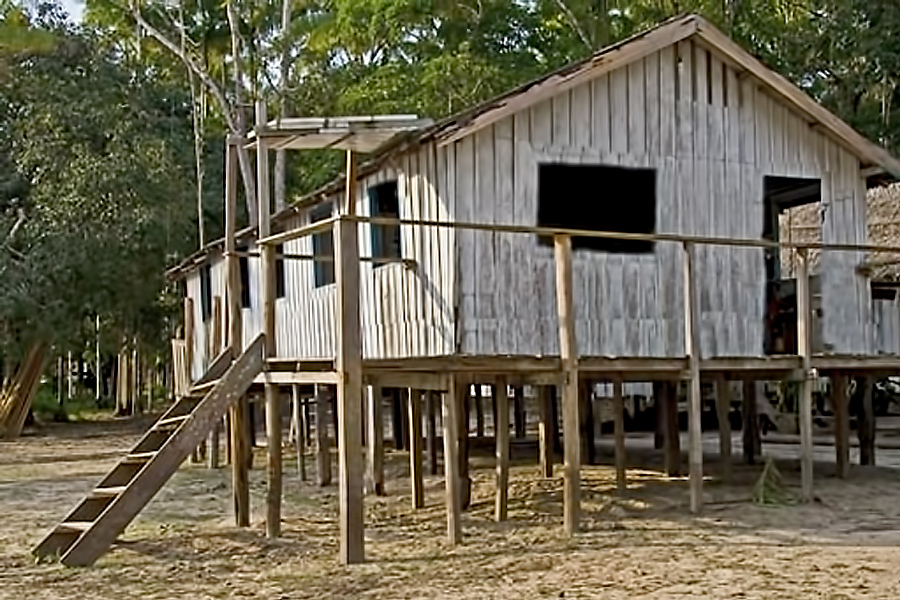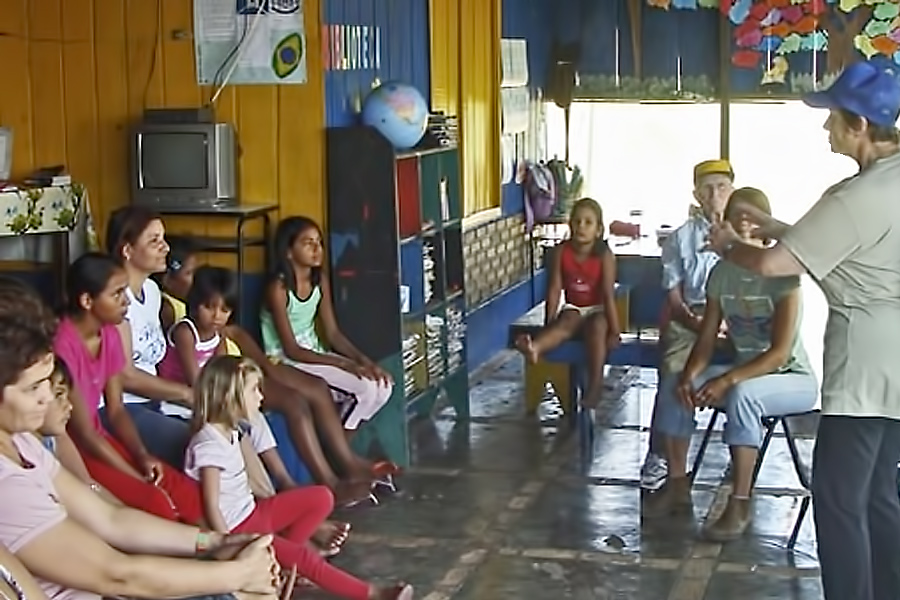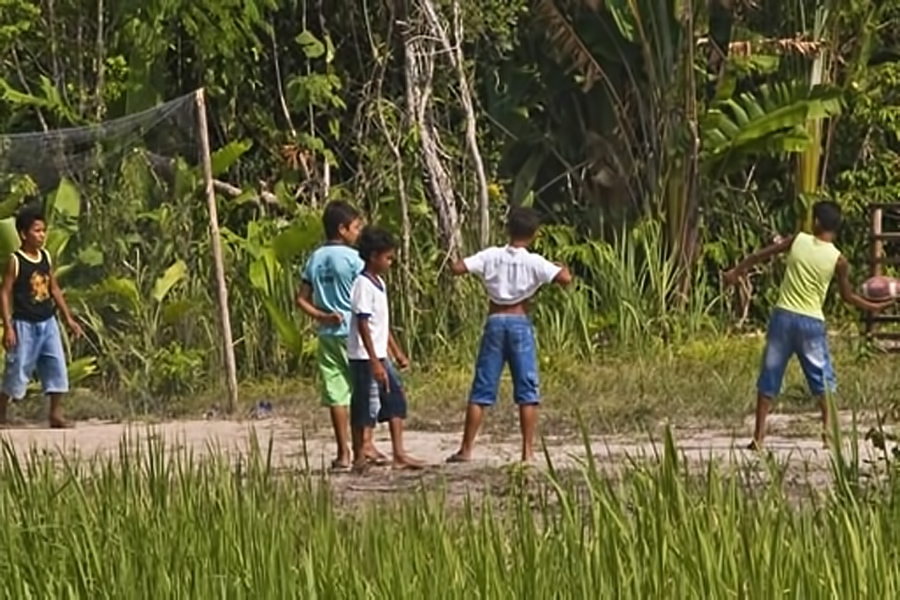


SCHOOL IN THE PANTANAL
During our 2008 Brazilian Amazon-Pantanal kayaking expedition, Bill and I encountered a remote school deep in the Pantanal, the world's largest wetlands. About 15 students who live on the surrounding cattle ranches attend the tiny school. The school year begins when the floodwaters recede enough for the students to be transported to school by tractor. Then as the water recedes they travel by truck to school.One day Bill and I had the good fortune to ride the "school truck" with the kids to school. We piled into the open-back truck along with about ten kids and sat on wooden benches and began the hour-long journey. A student's parent drove the truck across open fields of green grass then followed narrow sandy tracks through dense thickets of vines and trees. Hyacinth macaw parrots squawked down at us as we passed beneath their favorite tree. We rounded a bend in the track just a startled group of coati, their striped tails held high, dashed across our path to seek the safety of deep shadows among the trees. Cascading vines covered in pink flowers added to the soft morning light.

Crossing one cattle ranch or fazenda after another, opening and closing the gates of the numerous cattle fields was an important part of the journey. The kids took turns to jump off the slowing truck to race ahead, open the gate, and then close it before climbing back onto the truck. An hour later we arrived at the school under a sun that had by now become oppressively hot.

Surrounded by kids excited to start their school day, Bill and I were escorted into the classroom where I was invited to tell them of the children and schools we had visited in other countries. With the help of a parent who translated my English into Portuguese I told them of the children we had met in Russian Siberia and Alaska where winter temperatures can plunge to minus 40 degrees F and where the summers are short and cool. They were fascinated to hear stories of a place where daylight disappears in the winter months, the earth remains frozen for most of the year, and children their age walk across snow and ice to school. But when I told them that sometimes northern Alaskan children have to watch out for an occasional polar bear there was a stunned silence. It was difficult for these children of the hot, humid Pantanal to comprehend such a vastly different lifestyle.

One six-year-old boy asked if we ever rode a polar bear. Living on a large cattle ranch of several thousand acres where cowboys riding horses round up hundreds of cattle he couldn't see the usefulness of an animal as large as a polar bear if it couldn't be saddled and ridden. Another common question concerned clothing in cold climates. After I described the many layers required to stay warm one eight-year-old girl asked, "how can anyone walk while wearing all those clothes?" A small boy declared, "They must not play soccer because they can't move much."

We were shown the spotlessly clean kitchen. The mouth-watering aroma of a large saucepan of beef stew bubbled on top of the wood fueled stove. Later we joined the kids for lunch in the dinning room where we all enthusiastically ate bowls of stew and thick slices homemade bread.
About The Pantanal
Located south of the Amazon River Basin the Pantanal, is the world's largest freshwater wetland, a seasonally flooded plain fed by the tributaries of the Paraguay River. The 75,000 square miles is almost 10 times the size of the United States Florida Everglades. Annual floods, fed by abundant tropical rains, create one of the world's most productive habitats and are a giant nursery for aquatic life, supporting 260 species of fish. The name "Pantanal" comes from the Portuguese word pântano meaning wetland, bog, swamp or marsh. Over 80% of the Pantanal floodplains are submerged during the rainy seasons. Elevation of the Pantanal ranges from 260 to 490 feet above sea level. Annual rainfall over the flood basin is between 39 to 59 inches with most rainfall occurring between November and March. Its average temperature is 77 °F but temperatures can fluctuate from 32 to 104 °F. As the waters recede in the dry season, large numbers of birds and other animals arrive to take advantage of the rich food source making the Pantanal the world's largest wetland and one of the world's greatest natural habitats. Eco-Tourism provides hope for the future of the Pantanal because of it's unique wildlife.
Back to [Kid2Kid Index]
